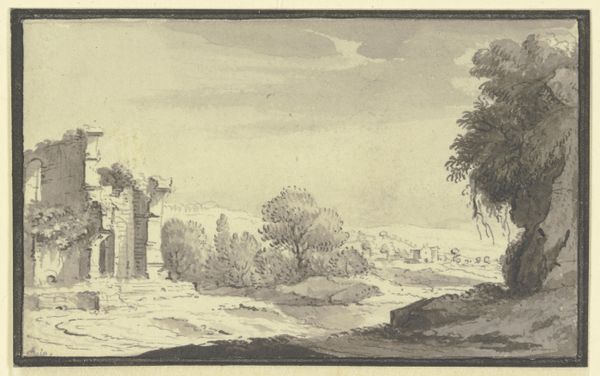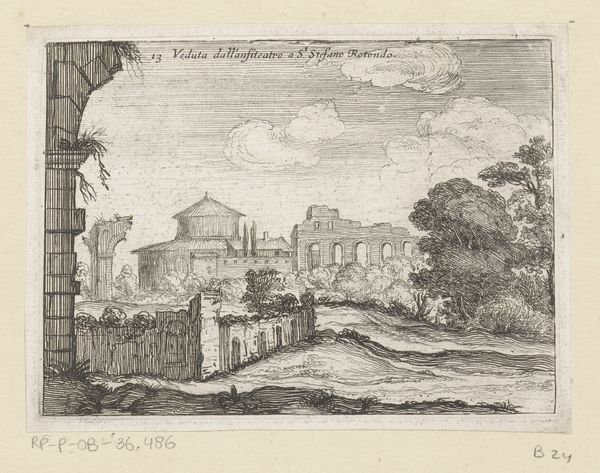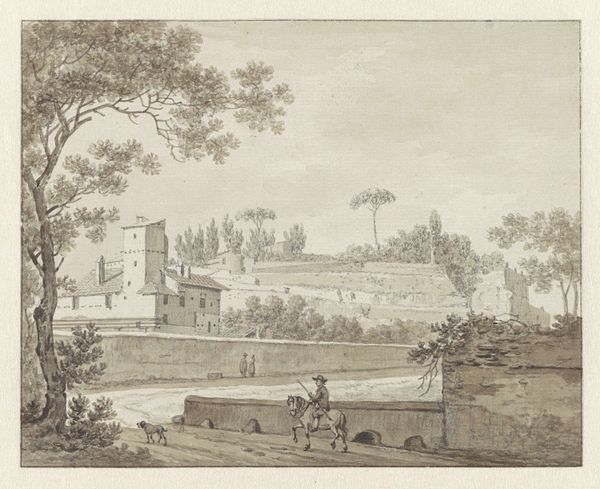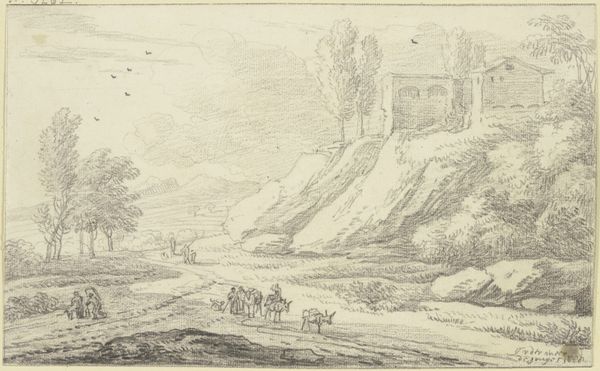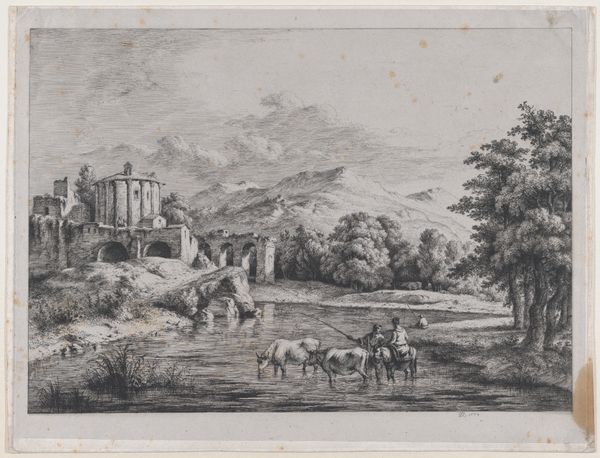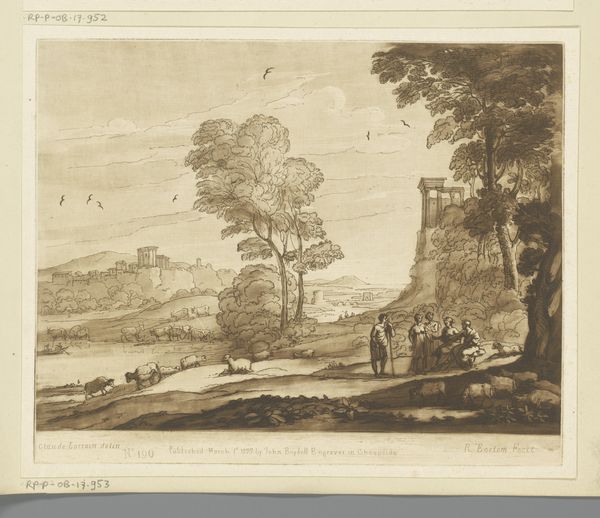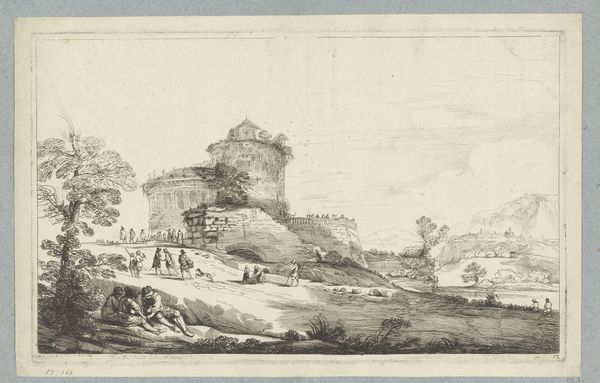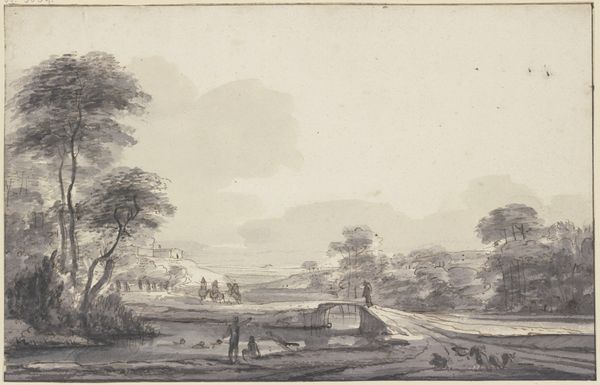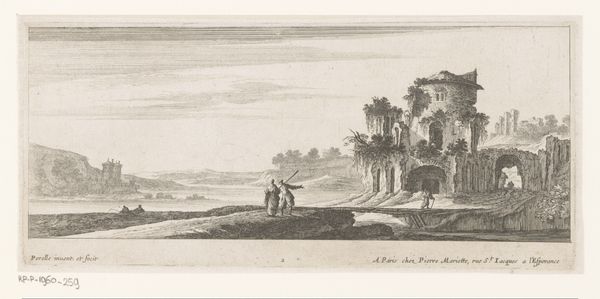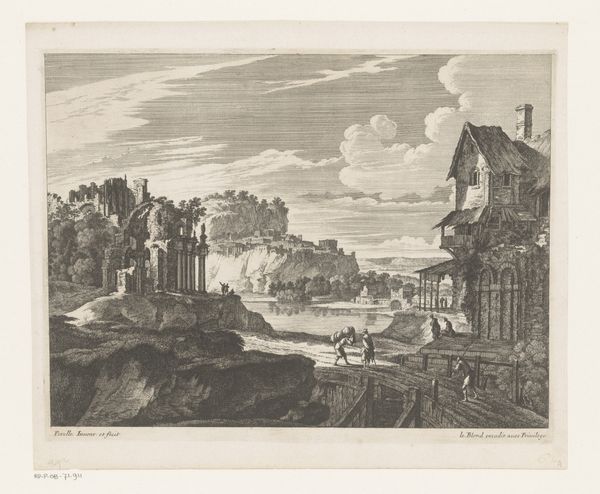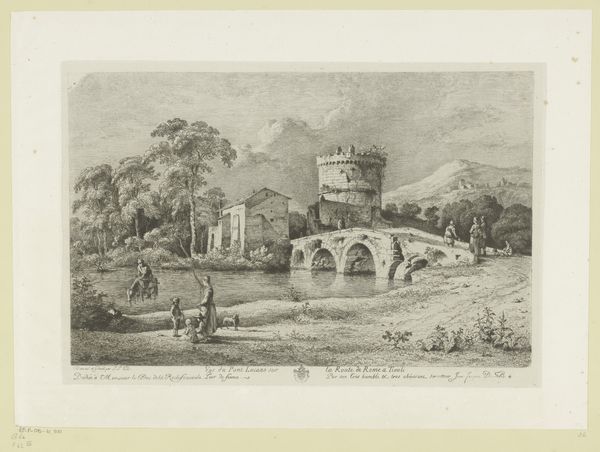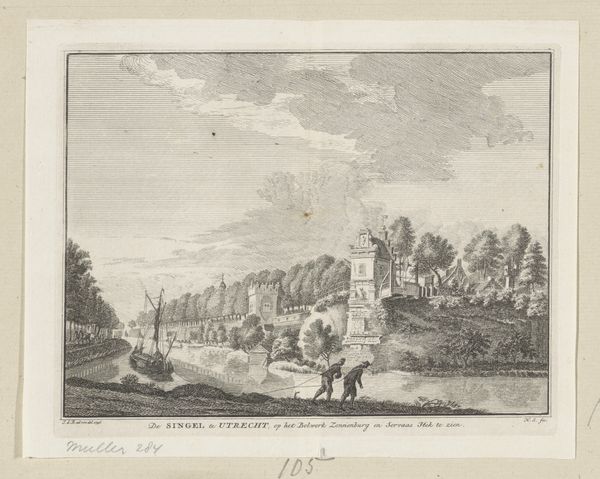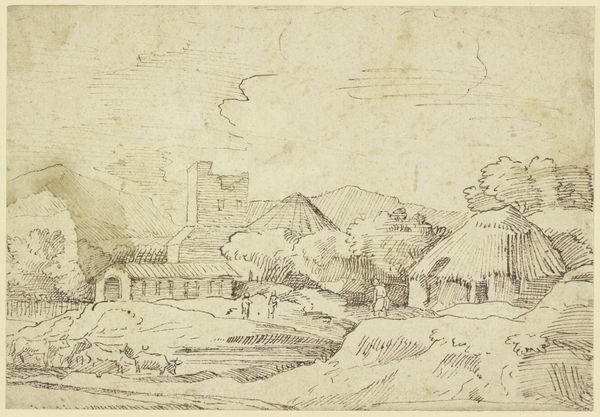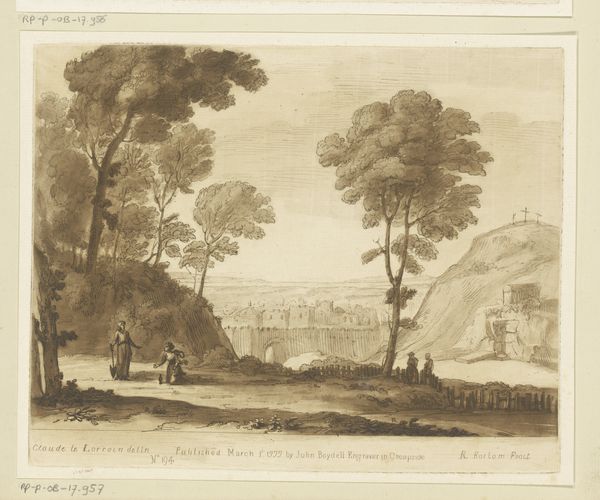
drawing, paper, ink
#
drawing
#
baroque
#
landscape
#
paper
#
ink
#
cityscape
Dimensions: height 263 mm, width 423 mm
Copyright: Rijks Museum: Open Domain
Curator: This is "Landschap met kasteelruïne," or "Landscape with Castle Ruins," a drawing made with ink on paper by Jean Pesne, sometime between 1666 and 1695. It's part of the Rijksmuseum's collection. Editor: There’s something desolate, yet serene, in its ruins. I’m immediately drawn to the texture rendered purely with ink—so tactile, especially in the broken stone. Curator: Absolutely, it encapsulates a very specific societal moment in art, doesn't it? Consider the role of landscape in the Baroque period, where depictions of nature often mirrored the impermanence of power and the passage of time, speaking to a spiritual crisis. The decaying castle ruins almost serve as a memento mori, a reminder of mortality. Editor: And it makes you think about labor too. Think about the physical construction, its purpose and now its disintegration; whose hands built this castle only to be consumed by time. And where did the materials come from? Who hauled the stone? There’s something sobering about reflecting on the process itself, which then creates a sharp contrast to the preciousness we often apply to the finished piece on display. Curator: That perspective makes us re-examine this image. The ink itself comes from resources extracted, processed, traded… So the image isn't just about a lost historical grandeur, but about global interconnectedness. Moreover, who is actually experiencing decline and ruin and whose lives are rendered as the beautiful "setting" for this moment? Editor: It really makes you wonder how many invisible hands made something out of these humble, available materials. Even the paper and ink are the result of specific processes and labor systems of the time. Curator: Precisely, situating this artwork within intersectional narratives allows us to deconstruct how power and marginalization might intersect. We move from passively viewing an antique landscape to critically engaging with the artwork’s embedded histories. Editor: Seeing this now I can’t help but appreciate the drawing less for its artistic ability, but for how we as a community perceive it now through a critical gaze. Curator: Agreed; thinking about materiality and labor in this way offers new pathways of connection to the art. Editor: It has really opened my eyes and I have more thoughts on our approach to analyzing art.
Comments
No comments
Be the first to comment and join the conversation on the ultimate creative platform.
